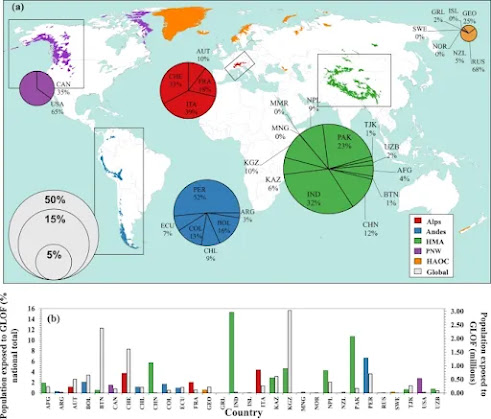Natural hazards: Global threat of glacial lake outburst floods assessed
Nature Communications
February 8, 2023
About 15 million people globally could be under threat from glacial lake outburst floods — with populations living in High Mountains Asia (India, Pakistan, China) and the Andes (Peru and Bolivia) the most exposed to this danger — suggests a study published in Nature Communications. The paper reports that more than half of the globally exposed population are found in just four countries: India, Pakistan, Peru, and China.
As climate warming melts glaciers, melt water can collect to form lakes close to glaciers. These lakes represent a substantial natural hazard in the form of glacial lake outburst floods (GLOFs). These floods can often happen with little prior warning when a natural dam containing a glacial lake fails. GLOFs have the potential to damage property and infrastructure and have previously resulted in extensive loss of life.
Tom Robinson, Caroline Taylor and colleagues present a global compilation of glacial lake conditions, exposure, and vulnerability mapping, to quantify and rank the damage potential from GLOFs in 2020. They found that populations living in India, Pakistan, China, Peru, and Bolivia are the most exposed. The authors highlight the Andes as an under-studied hotspot of GLOF danger and suggest that this region should be targeted for more detailed study. They note that areas with the highest danger are not those with the largest, most numerous, or most rapidly growing glacial lakes, but rather the number of people within the region and their capacity to cope with disaster that is central to their risk.
By identifying regions with the highest GLOF danger, the findings could allow for more targeted GLOF risk management. How GLOF danger might change in the future remains subject to debate. As glaciers continue to recede owing to climate change, existing glacial lakes will expand and many new lakes will form, altering the spatial pattern of GLOF danger. Further research is required to evaluate temporal changes in lake conditions, exposure, and vulnerability to determine the relative roles of each for GLOF risk.
Glacial lake outburst floods threaten millions globally | Nature Communications

No comments:
Post a Comment